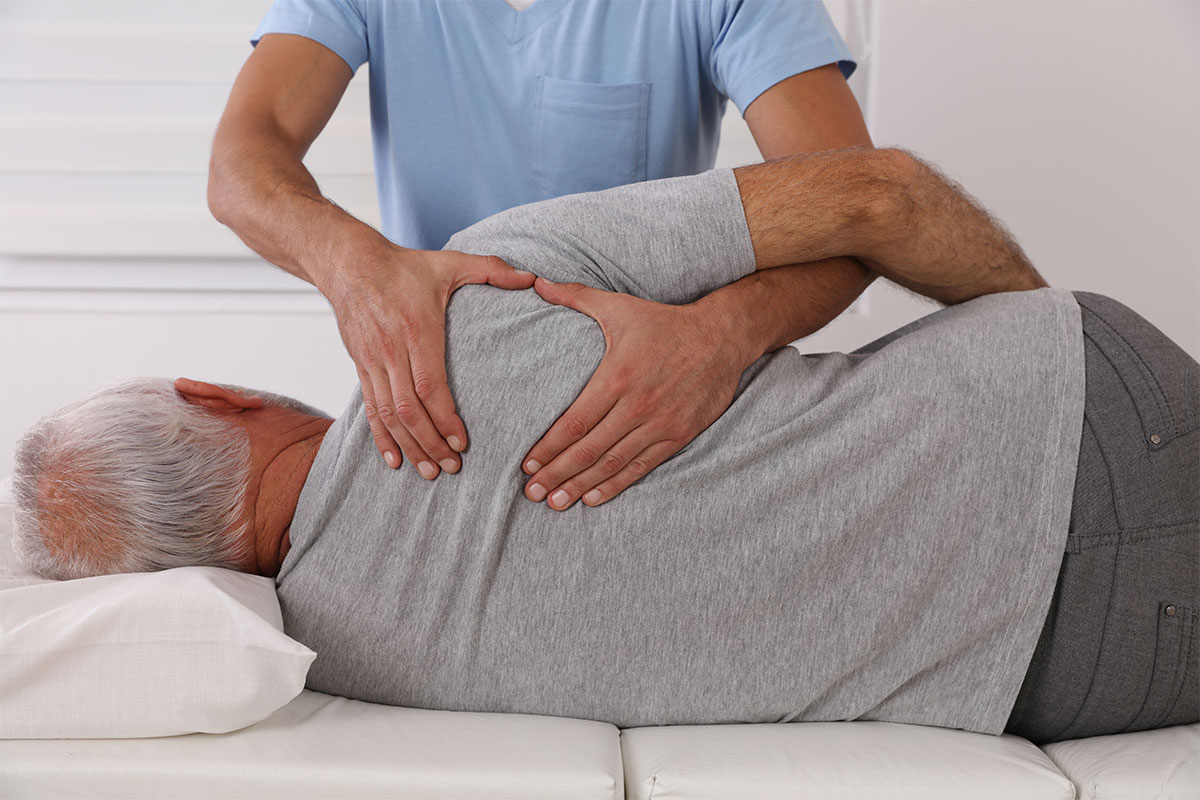Spinal stenosis is a common condition that causes the narrowing of the spinal canal, leading to compression of the nerves in the spine. This can result in pain, weakness, and numbness in the legs, back, and buttocks. Summit Integrated Health provides comprehensive care to alleviate symptoms and improve the quality of life for those affected by spinal stenosis.
The Spinal Anatomy
The spine, or the vertebral column, comprises 33 individual bones called vertebrae. These bones are stacked on top of each other and are separated by cushioning discs. The spinal cord, a bundle of nerves that runs from the brain to the lower back, is housed in the spinal canal, which is formed by the vertebrae. The spinal cord transmits signals between the brain and the rest of the body, controlling movement, sensation, and reflexes.

What is Spinal Stenosis?
Spinal stenosis is where the spinal canal, which encases the spinal cord and nerve roots, narrows and compresses the spinal cord or nerves. The narrowing may be caused by the degeneration of spinal discs, the thickening of ligaments, or the growth of bone spurs. Spinal stenosis can occur in any part of the spine, including the neck and lower back. The condition results in pain, numbness, and weakness in the arms, legs, back, and buttocks.
Foraminal vs. Central Canal Stenosis
Spinal stenosis can be further classified into two main types — foraminal and central canal stenosis. Foraminal stenosis occurs when the foramen, the small opening between two vertebrae where the spinal nerves exit the spinal canal, becomes narrow, leading to nerve compression. In contrast, central canal stenosis occurs when the spinal canal narrows, compressing the spinal cord and surrounding nerves. Both can cause pain, numbness, and weakness, but the exact symptoms depend on the stenosis’s location.
Symptoms:
- Radicular Pain: This type of pain radiates from the spine into one or both arms or legs. It is caused by the compression of the nerve roots that exit the spine and can be described as dull, tender, electric-like, or burning.
- Radiculopathy: This condition is characterized by numbness, tingling, or weakness in one or both arms or legs. It occurs when a nerve root is compressed or inflamed, leading to disrupted nerve signaling.
- Myelopathy: This is a condition that occurs when the spinal cord itself is compressed, leading to numbness, tingling, or weakness in both arms or legs. Myelopathy can also cause other symptoms, such as difficulty with balance, coordination, and bladder and bowel control.
- Cauda Equina Syndrome: This is a rare but serious condition resulting from the compression of the nerve roots below the spinal cord. It can cause saddle numbness (numbness in the groin area) and bladder and bowel control issues such as incontinence. If not treated promptly, cauda equina syndrome can lead to permanent paralysis.
Possible Causes:
- Degenerative changes in the spine due to aging
- Herniated or bulging discs
- Thickening of ligaments in the spine
- Bone spurs or abnormal bone growth
- Spinal injuries or trauma
- Inherited conditions that affect the spine
- Tumors in the spine
- Inflammatory conditions such as arthritis
- Infections or abscesses in the spine
In some cases, spinal stenosis may be present at birth or develop as a complication of other medical conditions, such as scoliosis or Paget’s disease. Certain lifestyle factors, such as poor posture, lack of exercise, and obesity, can also contribute to spinal stenosis. Our healthcare provider can determine the underlying cause of spinal stenosis and recommend appropriate treatment options.

The 3 Types of Spinal Stenosis
Lumbar Spinal Stenosis
Lumbar (lower back) spinal stenosis is the most common type of spinal stenosis. It is often caused by age-related wear and tear on the spinal discs, ligaments, and bones in the lower back. Symptoms may include pain, numbness, or weakness in the legs, buttocks, and lower back. The pain may worsen when standing or walking.
Cervical Spinal Stenosis
Cervical (upper back or neck) spinal stenosis is less common than lumbar spinal stenosis but can be more serious. It occurs when the spinal canal narrows in the neck region, putting pressure on the spinal cord and nerves. Symptoms may include pain, numbness, or weakness in the arms, hands, and neck, affecting balance and coordination.
Thoracic Spinal Stenosis
Thoracic (upper back) spinal stenosis is the least common type of spinal stenosis. It occurs when the spinal canal narrows in the middle back region, and symptoms may include pain, numbness, or weakness in the chest, abdomen, or legs. This type of spinal stenosis is often caused by trauma, degenerative disc disease, or genetic disorders.
Diagnosing The Root Cause of Spinal Stenosis
To diagnose spinal stenosis, our healthcare providers typically perform a physical exam and ask about symptoms. Imaging tests such as X-rays, CT scans, and MRIs can identify the location and severity of spinal stenosis and any underlying conditions contributing to the symptoms. Electromyography (EMG) and nerve conduction studies may be performed to evaluate nerve function. Once the root cause is identified, we can recommend appropriate treatment options to alleviate symptoms and improve quality of life.
Personalized Treatments for Spinal Stenosis
Treatment for spinal stenosis depends on the individual’s symptoms, the severity of the condition, and other underlying health conditions. Summit Integrated Health offers various treatment options to alleviate pain and improve mobility, including pain management, physical therapy, platelet-rich plasma, regenerative medicine, spinal decompression, and trigger point injections. We create personalized treatment plans for each patient to alleviate the symptoms of spinal stenosis and improve the quality of life.

Schedule Your Consultation
If you are experiencing the symptoms of spinal stenosis, don’t wait to seek treatment. At Summit Integrated Health, our multidisciplinary team of healthcare providers is dedicated to helping patients with spinal stenosis manage their symptoms and improve their quality of life. We offer personalized treatment options that address each patient’s unique needs, focusing on holistic, non-surgical interventions. Schedule a consultation to learn how we can help you return to doing what you love.